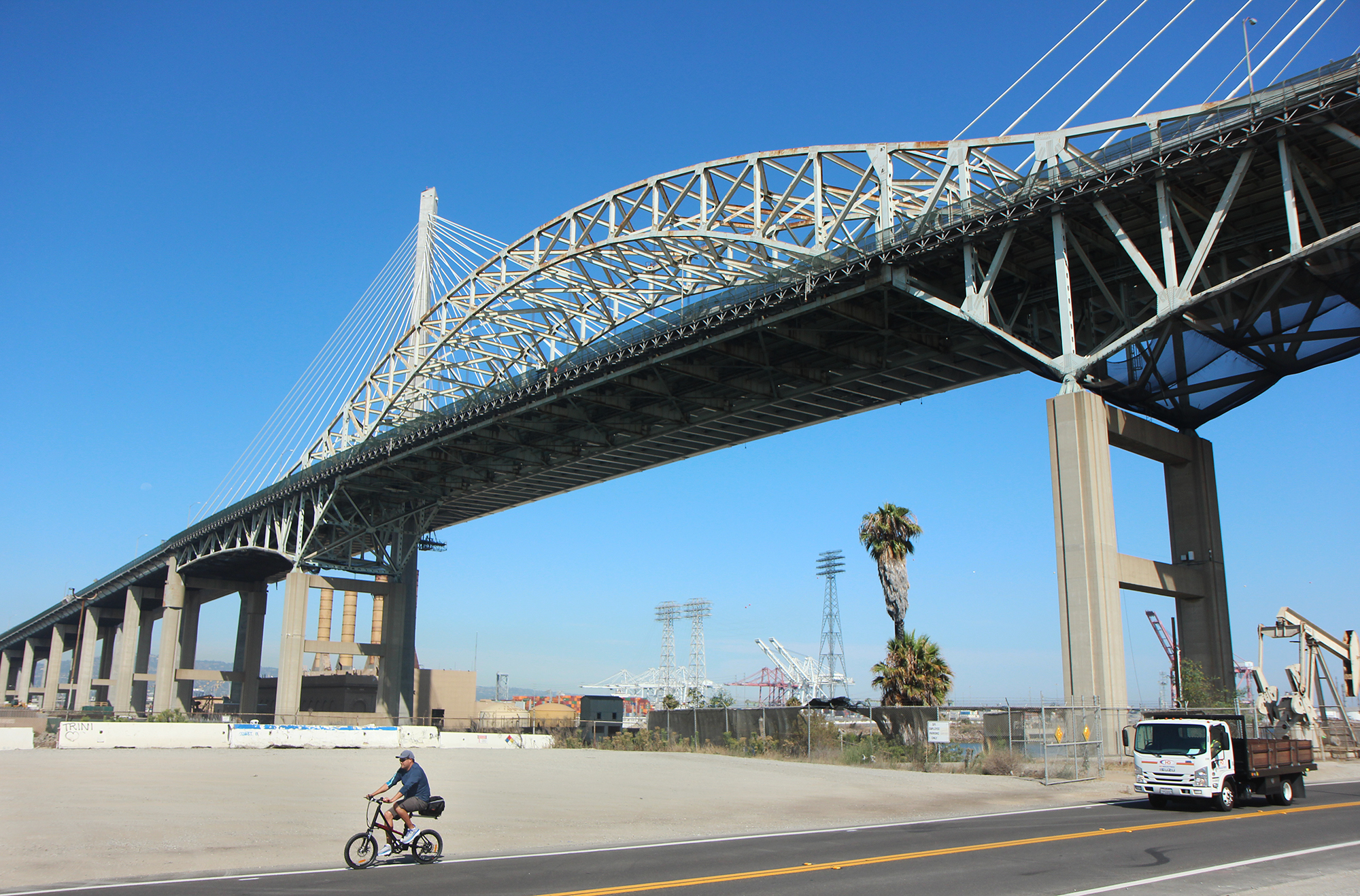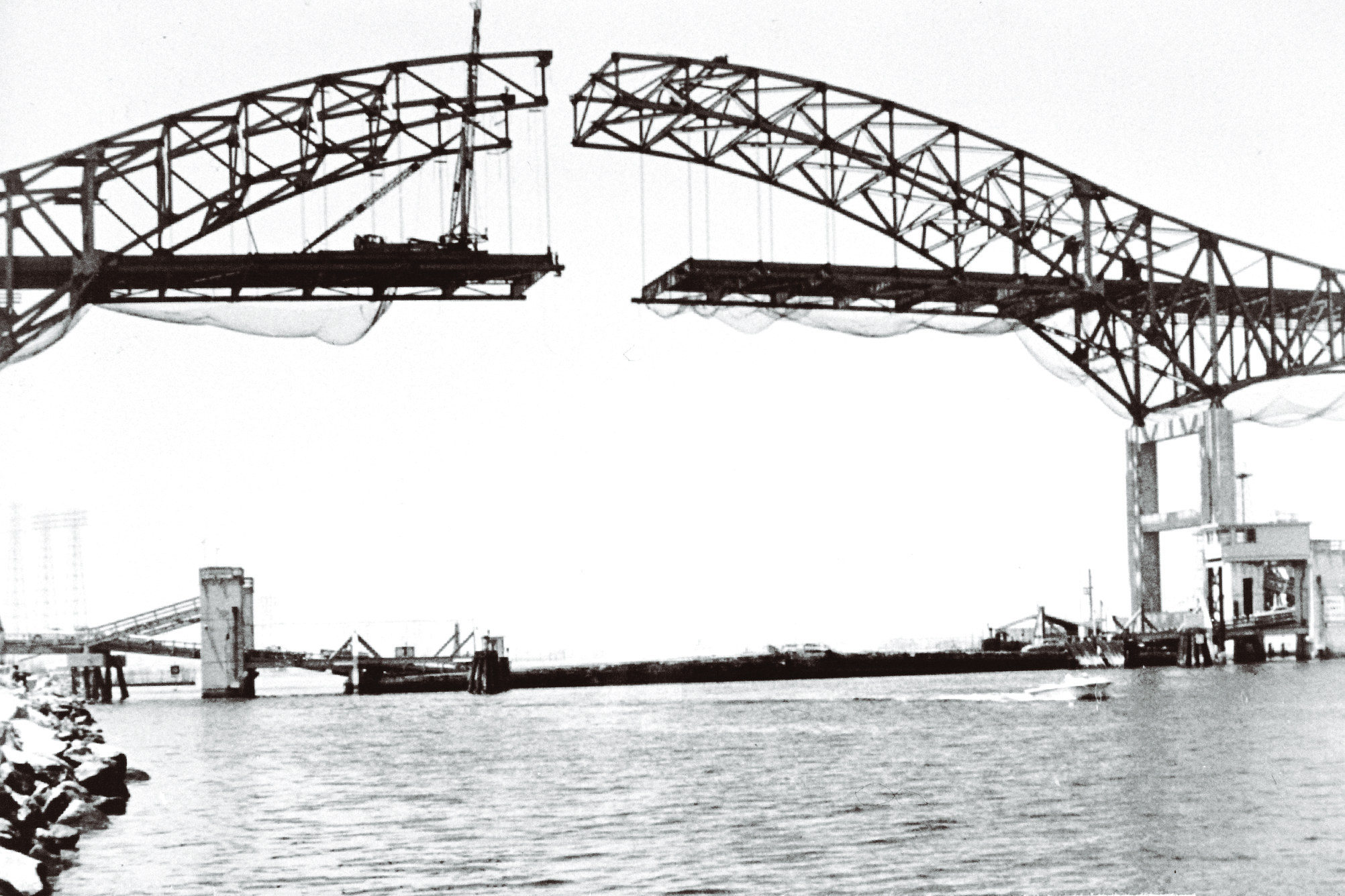
The Gerald Desmond Bridge, which has connected Downtown Long Beach to Terminal Island for more than five decades, is slated to be fully demolished by October 2023, with the main span completely removed months earlier in April 2023, according to Port of Long Beach officials.
The Long Beach Board of Harbor Commissioners earlier this month approved a $27.5 million contract with Vancouver Washington-based construction company Kiewit Infrastructure West Co. to demolish the bridge. The company is expected to submit its demolition plans, including methodology, by early 2022 with demolition to begin in May 2022, according to port Capital Programs Executive Duane Kenagy.
“Our tenants in the inner harbor area would like to begin scheduling larger vessels as soon as possible,” Kenagy said. “So we’re going to do everything we can to get this thing removed safely and as fast as reasonably possible.”
Methods to demolish the bridge include lowering large sections onto a barge to be disassembled at another location or reverse-engineering the bridge in place. Kenagy said the demolition will likely be a hybrid of the two methods.
The total budget for the project is $59.9 million, which includes the Kiewit contract, a $7.2 million contract with WSP USA for construction management, $6 million for contract support, an $8.6 million contingency fund, $10 million in design costs that has already been spent and $600,000 in bid and award costs.
Kiewit submitted the lowest of five bids received by the port. The company underbid the next lowest firm, American Bridge Company, by nearly $5 million. The high bid of nearly $75 million came from Long Beach-based Taylor-Walsh Joint Venture.
“There are a number of factors that go into demolition that are unique in construction,” Kenagy said. “First of all, it’s not a situation where you go and buy [materials] in a competitive market, it’s all down to methodology. Also, there’s quite a bit of value in the salvaged materials.”
Demolition companies often have disposal agreements in place for materials such as steel, Kenagy explained. The more favorable the agreement, the more money the demolition company will make on salvaged materials, which can translate to lower bids for the work being done.

The vast majority of the old bridge will be recycled in some manner, Kenagy said, but the port is retaining small bits of steel and a certain number of bolts to be given out as commemorative gifts, he said.
The demolition requires extra care due to the Gerald Desmond’s close proximity to the newly opened bike path on the south side of the Long Beach International Gateway Bridge. Another challenge is to ensure the old bridge does not collapse during the demolition, Kenagy said, adding that the pavement will likely be removed first to lessen the load on the steel structure.
“The old bridge was designed to be locked together, so when you start tearing it apart, you need to make sure it remains stable,” Kenagy said. “In fact, as part of the demolition, one of the first things they’ll have to do is actually build some extra reinforcement.”
Once the Gerald Desmond is no more, the new bridge, which opened in October, will allow larger ships to pass through to Long Beach’s inner harbor. Over the last 20 years, container ships have continued to grow. Two decades ago, when initial planning began for the International Gateway Bridge began, “mega ships” were not nearly as large as they are today, port spokesman Lee Peterson noted.
In the year 2000, the largest container ship was capable of carrying 8,000 twenty-foot equivalent units (the standard measure of a shipping container), according to porteconomicsmanagement.org. By 2010, when port officials submitted the environmental impact report for the proposed bridge replacement project, the largest vessel could carry up to 14,000 TEUs. Today, ships are fast approaching a 25,000 TEU capacity.
“The biggest ships in the world are not going to go back there,” Peterson said.
However, only two of the port’s six container terminals are in the inner harbor, Kenagy pointed out. While ships carrying upward of about 9,000 TEUs would have to squeeze beneath the old bridge, the International Gateway will allow vessels carrying upward of around 15,000 TEUs depending on the configuration of the cargo, Kenagy said.
“There’s a lot of industry thought that the workhorse of the Pacific trade lanes in the future are probably going to be in the 13,000-14,000 TEU vessel size,” Kenagy said. “We believe virtually all of the vessels that would want to go into the inner harbor area will be able to.”
